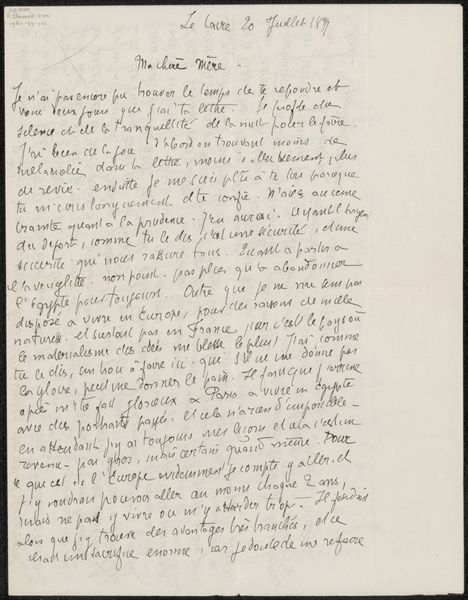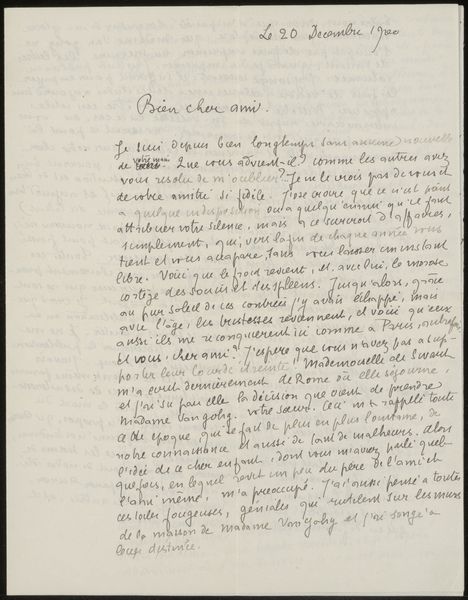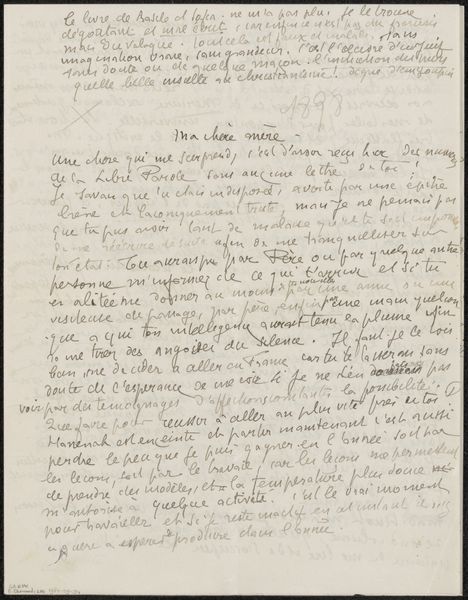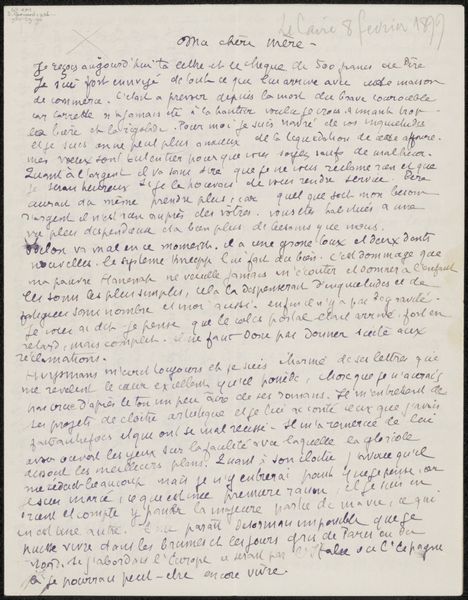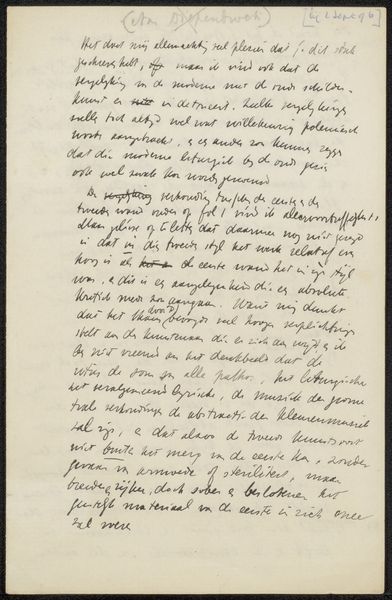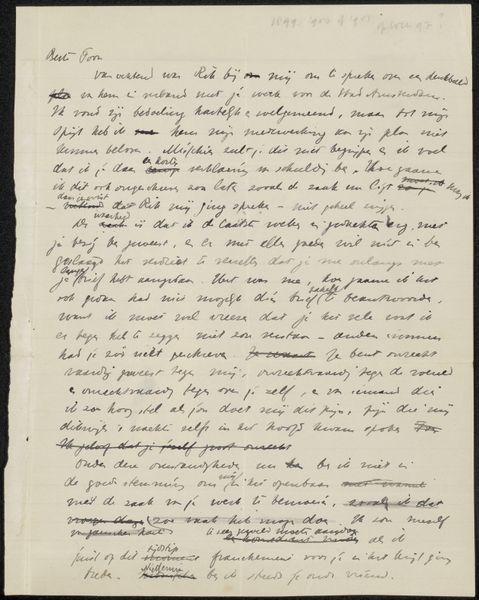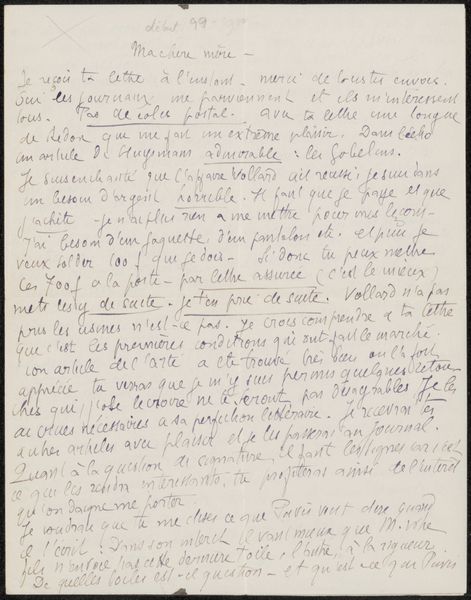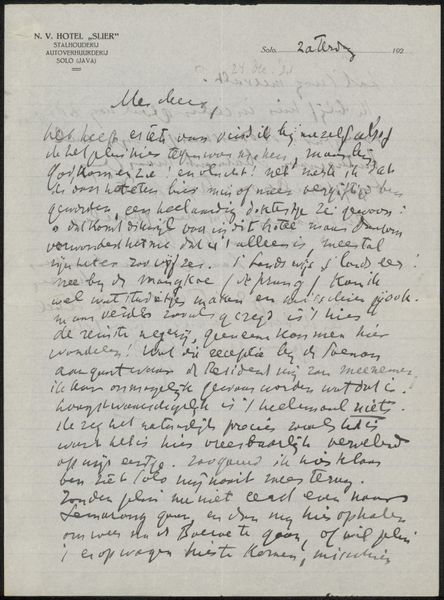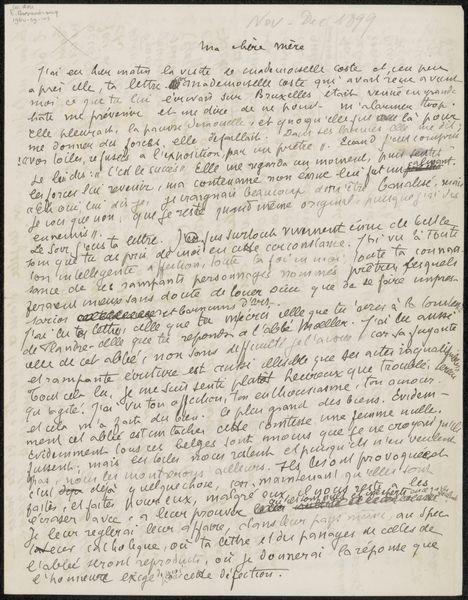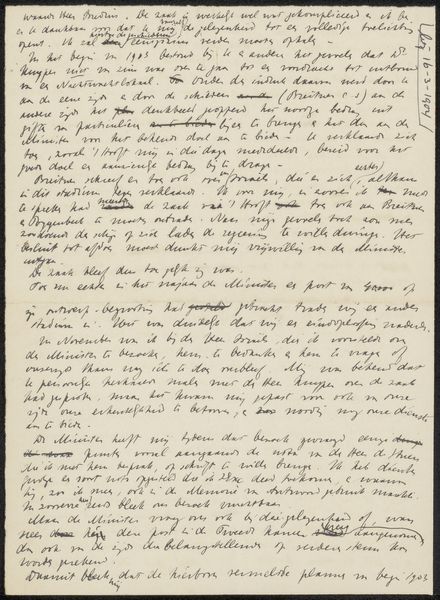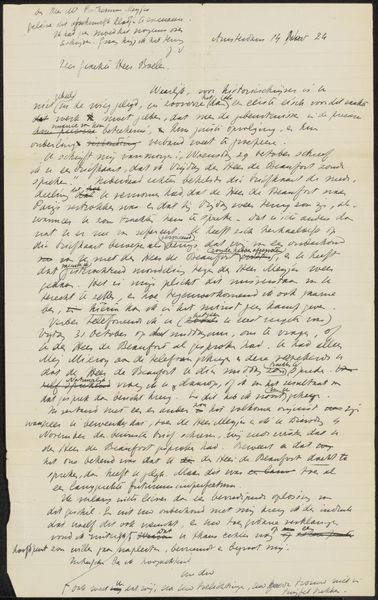
drawing, textile, paper, ink, pen
#
portrait
#
drawing
#
textile
#
paper
#
personal sketchbook
#
ink
#
pen
Copyright: Rijks Museum: Open Domain
Curator: We're looking at "Brief aan Andries Bonger," which translates to "Letter to Andries Bonger" by Émile Bernard. While the exact date is uncertain, it’s likely from the period between 1900 and 1928. The work uses pen and ink on paper and a textile backing. It is currently unlocated. Editor: Immediately, I'm struck by the intimacy of it. The handwriting, the cramped text, it all speaks to a personal connection. It feels less like a formal artwork and more like a glimpse into a private exchange. Curator: Exactly. This isn't a polished piece intended for public consumption, but rather a raw, unfiltered outpouring of thoughts and feelings. The social context here is essential; Émile Bernard’s friendship with Andries Bonger, Theo van Gogh’s brother, places it within a circle deeply connected to the post-impressionist movement. Bernard likely poured all sorts of private feelings on to the page. Editor: The use of script also carries significant weight, wouldn’t you say? The swirling, looping letters are laden with emotionality—each word rendered so deliberately. Calligraphic style, even in a quick script like this, can denote education, social standing, or artistic aspirations. What emotions do you feel evoked from the page? Curator: Absolutely. The textual medium also provides rich layers. From a cultural perspective, the very act of letter writing suggests a deliberate engagement with language, and communication across distances—both physical and emotional. These verses of Baudelaire offer an introspective depth, connecting personal experiences to universal truths, such as the burdens that one inevitably carries. Editor: Baudelaire definitely sets a melancholic undertone! Also, I read here in the transcription where Bernard mentions his wife giving birth to a fourth child... the stress and exhaustion radiating from those lines feel almost palpable, like the paper absorbed some of his intense emotions in ink. He seems to be going through great emotional distress at the time of writing. Curator: His raw confessions are really evident throughout the letter! In essence, the letter provides insight into Émile Bernard’s identity, showcasing an intersection of personal turmoil, social ties, and intellectual aspirations during a really transformative era of modern art. Editor: And by extension, it shows us that artists of the time struggled just as all of us today do with daily personal matters! Looking at this gives an unexpected reminder of life, art, and communication between two humans across the century. Curator: Indeed. And this artwork reminds us how much even a humble drawing can tell.
Comments
No comments
Be the first to comment and join the conversation on the ultimate creative platform.
